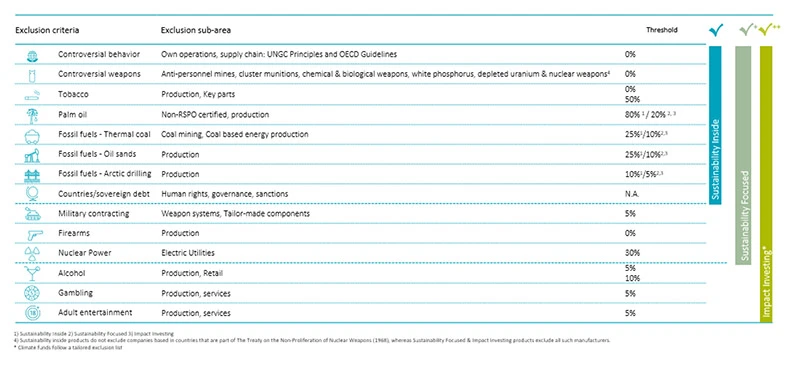Disclaimer
The information contained in the website is solely intended for professional investors. Some funds shown on this website fall outside the scope of the Dutch Act on the Financial Supervision (Wet op het financieel toezicht) and therefore do not (need to) have a license from the Authority for the Financial Markets (AFM).
The funds shown on this website may not be available in your country. Please select your country website (top right corner) to view more information.
Neither information nor any opinion expressed on the website constitutes a solicitation, an offer or a recommendation to buy, sell or dispose of any investment, to engage in any other transaction or to provide any investment advice or service. An investment in a Robeco product should only be made after reading the related legal documents such as management regulations, prospectuses, annual and semi-annual reports, which can be all be obtained free of charge at this website and at the Robeco offices in each country where Robeco has a presence.
By clicking Proceed I confirm that I am a professional investor and that I have read, understood and accept the terms of use for this website.
Sustainable Investing
Thermal coal exposure
Thermal coal exposure measures the proportion of a company’s operations that is linked to the mining, processing or sale of this common but increasingly environmentally unacceptable fossil fuel.
Thermal coal, also known as ‘steaming coal’ or just ‘coal’, is widely used as the principle means of generating electricity in much of the world. However, its high carbon and sulfur content means it is also a major contributor to greenhouse gas emissions and global warming. This means it is increasingly being excluded from asset management portfolios, particularly those that seek to lower than carbon footprints.
Coal in all its forms derives from the remains of plants that grew on Earth about 250 million years ago. These plants decayed and were eventually turned into coal by the intense heat and pressure of the Earth’s geological forces. Since its discovery in prehistoric times as a mineral that burns easily, it has been increasingly used to generate heat. Although its use globally has been declining since 2013, thermal coal still supplies about a quarter of the world's primary energy and two-fifths of its electricity, according to the International Energy Agency (IEA). (Thermal coal differs from coking coal, which has a higher energy content and is chiefly used in metal making rather than electricity production.)
Coal’s principal problem is that burning it is the largest source of CO2, accounting for 14 trillion tonnes of emissions in 2016, and about 25% of all global greenhouse gas emissions, the IEA says. In order to meet the terms of the Paris Agreement, coal use needs to halve between 2020 and 2030, according to the Carbon Brief data collation service. The UN has asked all governments to stop building new coal-fired power stations, but this has not been universally followed. The largest producer, consumer and importer of coal is China.
Creating returns that benefit the world we live in
Exclusions from portfolios
As coal use has become increasingly unacceptable in a sustainability context, it is being treated by investors in a similar vein as tobacco or contentious weapons. In September 2020, Robeco extended its exclusion policy for fossil fuel producers and users to its entire range of strategies to help combat global warming.
Companies that derive 25% or more of their revenues from thermal coal or oil sands, or 10% from Arctic drilling, are barred from Sustainability Inside investment portfolios – the majority of strategies at Robeco. This expanded the thermal coal exclusion policy that had previously only applied to the more bespoke Sustainability Focused and Impact Investing strategies. It also bars investment in companies actively engaged in oil sands and Arctic drilling for the first time. It means 236 fossil fuel companies in the energy, mining and utilities sectors will join the exclusions list.
Stricter thresholds are applied to Sustainability Focused and Impact Investing portfolios, excluding companies with just 10% of their activities in thermal coal and oil sands, or 5% in Arctic drilling. As a result of the expansion, the exclusions policy covers the entire range of UCITs-registered strategies at Robeco, accounting for EUR 160 billion of assets under management at December 2020.

Sources: Robeco, enhanced exclusion criteria (maximum percentage of company revenue threshold)
















